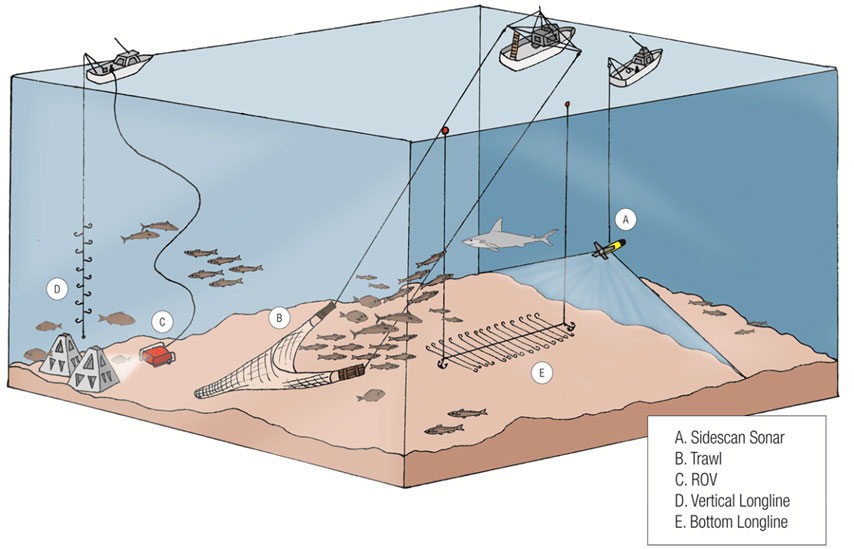Fisheries-Independent Ecosystem Survey
Project Leader:Sean Powers, Ph.D., Principal Investigator
Project Details
Background:
Ecosystem-based fishery management has evolved from an abstract concept to a broadly accepted tenet for effective conservation and management of marine resources. Despite this, fishery managers are increasingly tasked with gathering more fisheries-independent data to fulfill current, single species management objectives. Given finite resources, these two objectives are often in competition. The goals of the FI project are to provide a unique fisheries-independent survey design that fully addresses both ecosystem and single species management objectives in the northern Gulf of Mexico.

Objective(s):
The objectives of the FI project are to (1) conduct a rigorous ecosystem-based assessment of reef fishes in the northern Gulf of Mexico, (2) examine the relationship between reef fish assemblages and habitat attributes (natural vs. artificial vs unstructured), (3) determine the selectivity of gear used in both fisheries-dependent and fisheries-independent surveys, including vertical longlines, bottom longlines, bottom trawls and video and (4) examine age composition of multiple reef fish species, particularly Red Snapper (Lutjanus campechanus).
Approach:
To accomplish these objectives, we’ve divided the Alabama reef permit zone, a large offshore area encompassing most of the inner continental shelf off Alabama’s coast, into 2km2 grids, creating a depth stratified random survey sampled with multiple gears. Following mapping of 36 randomly selected grids each year, synoptic sampling using vertical and bottom longlines, ROV and bottom trawls is conducted (Figure 1).
Results to Date:
Originated as a pilot project in 2010, FI sampling scheduled through 2020 represents our largest sampling effort to date. Information from this survey has been collected and used for stock assessment models; for example, indices of abundance and age composition from this project were included in the most recent assessment for Red Snapper during SEDAR 31. In addition, data from this project have been used to test the efficiency of specific gear types for sampling reef fish in the Gulf of Mexico (Gregalis et al. 2012), as well as form the basis for several graduate student research projects and pending grant proposals.
